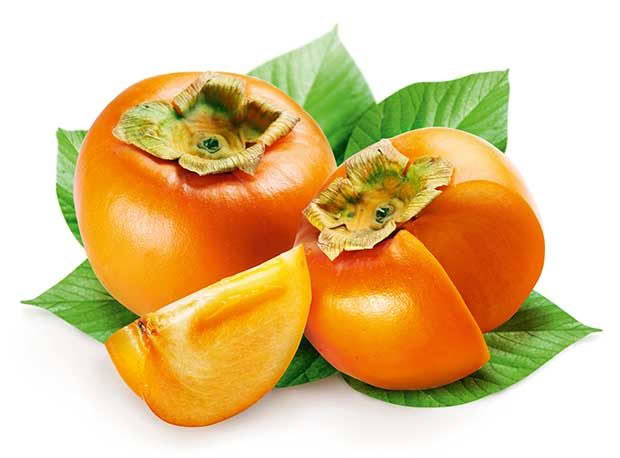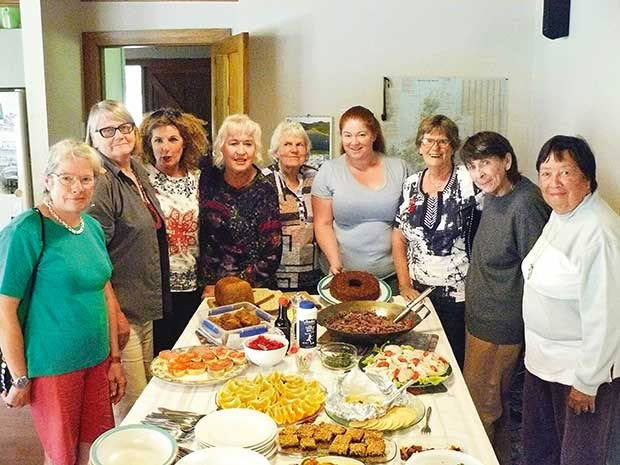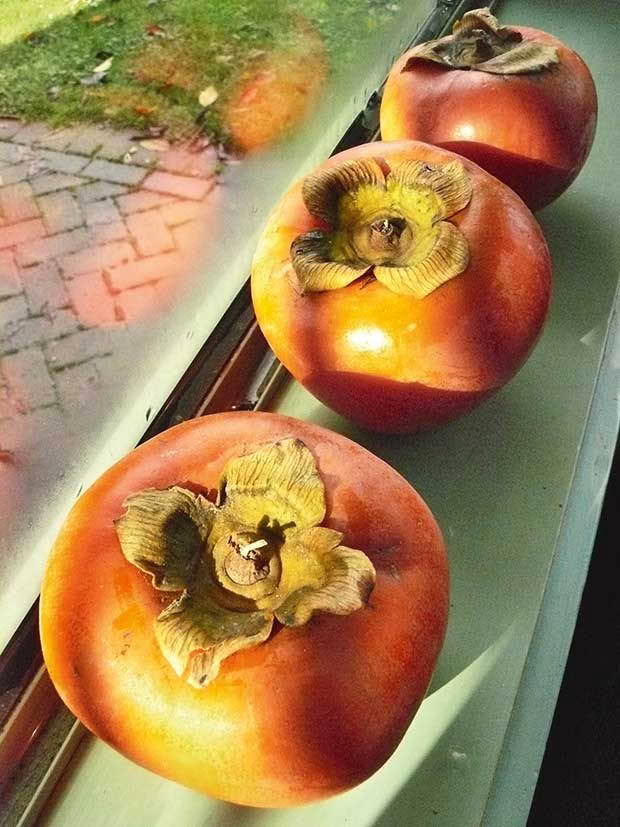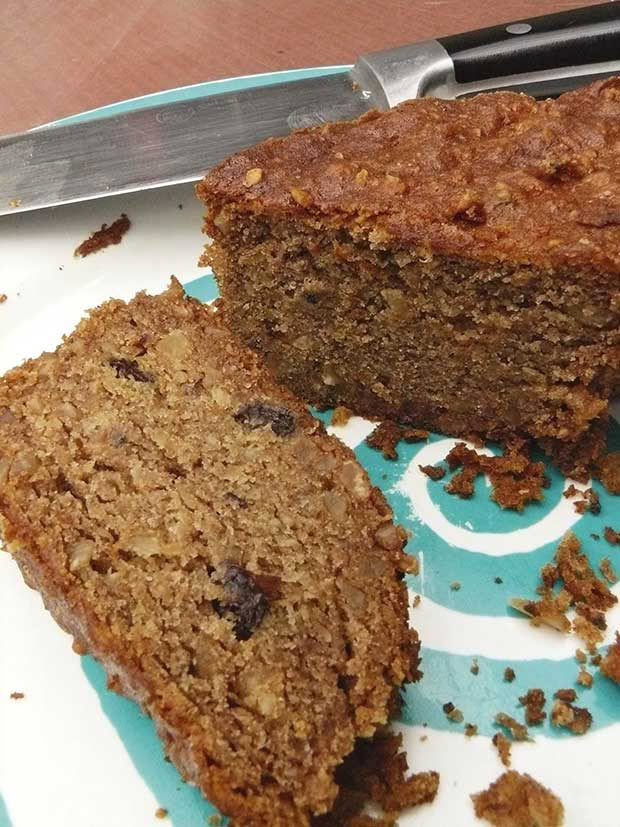How to tell when a persimmon is ripe PLUS and easy persimmon cake recipe

The softer and squishier it gets, the better it is.
Words: Kristina Jensen
There is a regular gathering out here in the Marlborough Sounds that I really try my hardest to attend. The monthly meeting of the Kenepuru Branch of Rural Women NZ is about 20 women, many with farming in their backgrounds.
The definition of a rural woman has changed over the past 20 years.
Our group includes women who are electronics and IT specialists, teachers, writers, an ex-diamond appraiser from London, mussel farmers, massage therapists, while some have holiday homes here and only come to a few meetings a year.
I grew up on dairy farms in the Waikato and northern King Country so consider myself to be a rural woman at heart, even though I have lived in both urban and rural environments over the past 30 years.
My mother wasn’t a member. If I had asked her why not, she probably would have said she didn’t have time. But I find it is an absolute joy to get together with these women and definitely worth the time and effort.

Our isolation makes the meetings all the more important in terms of support and companionship. Members have to drive an hour-plus to attend in some cases. In the past, many of the meetings in the Sounds were held in the local halls and women would boat in from the various bays to spend the day together discussing issues affecting their families, farms and country.
One of the big attractions has always been the food. I may be opening a can of worms here, mainly because the last thing that Rural Women NZ wants to be known for is tea and scones, but honestly, our pot-luck lunches are fabulous.
We all bring a plate to share and in doing so, share recipes, healthy tips on eating, get to try unusual exotic, gluten-free or vegetarian foods, and indulge in the odd bit of cake.
This is where my recipe for this month comes in. I decided at our March meeting, held at our place in Clova Bay (where we live as care-takers of a property) to make my persimmon cake for the ladies and see what they thought of it.
Persimmons have to be the jewel in the crown as far as fruit goes for me. In early winter the trees are a delight to see, beautiful, golden-orange globes hanging on bare branches. It makes me wonder if this was perhaps where the mythical stories of the golden apple came from.

I adore them and go to great lengths to procure some each year. I have a little supply route that requires me to schedule in a trip into the big wide world – ‘I’m going out’ as we say here in the Sounds – and I have made good friends with three landowners in the Motueka area who have fine specimens of persimmon trees.
These trees produce generous crops every year, and these people have always been equally generous in allowing me to help myself. Visit us in July and you will see persimmons lining the window sills, gently ripening into the ‘goo’ stage. Once gooey, I will start whizzing them up to freeze so that I always have persimmon ‘goo’ on hand.
I have met many people who say ‘yuck’ if I mention that I’ve been eating persimmons. This is because they have probably tried to eat one when it was still hard. Most persimmons grown in New Zealand are the Asian or Japanese type (Diospyros kaki) and these come in astringent and non-astringent varieties.
The astringent ones are quite mouth-puckering, to say the least. In fact, the name persimmon is derived from putchamin, pasimian or pessamin, words from an Algonquian language of the eastern USA which means ‘a dry fruit’.
My advice is to be patient. Let a persimmon get soft, squishy, gooey. Everyone in the group loved the cake!
3 INTERESTING FACTS ABOUT PERSIMMONS

1. Persimmons share a bit of botanical morphology with tomatoes, because although we don’t think of them as such, they in fact are berries.
2. Most varieties of persimmon are parthenocarpic, which means that the flowers do not need cross-pollination to produce fruit. Cross-pollination is usually not desirable
as it results in seeds in the fruit.
3. Persimmons need long warm summers to ripen their fruit.
HOW TO MAKE PERSIMMON GOO
You will need very ripe persimmons for this cake, and the best way to achieve perfect ripeness is to sit them on a window sill until they get squishy to the touch. Then you simply remove the peel and pips with your fingers and puree the goopy mess in a food processor.
I freeze portions of one cup each so that I have exactly the right amount for each cake. This cake can also be made with fig and feijoa ‘goo’ too.
Persimmon ‘goo’ is also very good when stirred into yoghurt or poured over ice cream, pancakes or pikelets.
HOW TO RIPEN PERSIMMONS
Either pop them on a window sill until they soften up, or place them in a closed container in the fridge with a pear, apple or banana (the ethylene given off by these fruits aids the ripening process).
Strangely enough, persimmons are the only fruit that are better kept at room temperature.
They ripen quicker if they are put in the fridge.
RECIPE: PERSIMMON CAKE

INGREDIENTS
¾ cup currants or plump raisins
¼ cup brandy
1 cup persimmon ‘goo’
125g butter
1 cup sugar
2 eggs
1 tsp vanilla essence
1¼ cups gluten-free flour
½ cup ground almonds
¼ tsp salt
1 tsp baking soda
1 tsp cinnamon
1 cup chopped roasted walnuts
METHOD
Soak currants or raisins in the brandy for an hour in a shallow dish. Cream the butter and sugar. Add the eggs, one at a time, along with the vanilla essence. Sift the flour, salt, baking soda and cinnamon together and fold in gently with the persimmon goo, ground almonds, walnuts and brandy-infused dried fruit. Bake for 35-40 minutes at 180˚C.
Love this story? Subscribe now!
 This article first appeared in NZ Lifestyle Block Magazine.
This article first appeared in NZ Lifestyle Block Magazine.
